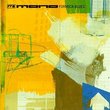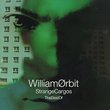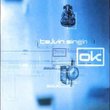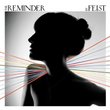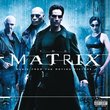| All Artists: Jean-Michel Jarre Title: Chants Magnetiques Members Wishing: 1 Total Copies: 0 Label: Dreyfus Release Date: 5/1/1994 Genres: Dance & Electronic, New Age, Pop Styles: Electronica, Meditation, Dance Pop Number of Discs: 1 SwapaCD Credits: 1 UPCs: 764911614229, 042282474827, 042282945716, 764911614243, 738476751224 |
Search - Jean-Michel Jarre :: Chants Magnetiques
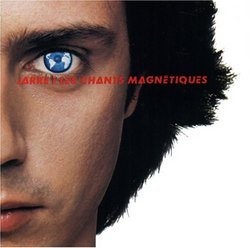 | Jean-Michel Jarre Chants Magnetiques Genres: Dance & Electronic, New Age, Pop
|
Larger Image |
CD DetailsSimilarly Requested CDs
|
CD ReviewsMagnetic fields and that damn Rumba Mike Chadwick | Gdynia,Poland | 05/12/2004 (5 out of 5 stars) ""les chants magnetiques" is a first JMJ album that was created with digital synths and fairight synthesiser. It sounds really more modern that his previous albums like "Oxygen" or "Equinoxe". The first four parts including 17 minutes long epic part 1 and funky part 2 (which is absolute jarre classic tune) are almost flawless. Each track flows perfectly into another. The whole atmosphere of "les chants..." is much more de-humanized than "equinoxe".Some wierd samples of machines,trains,clocks...cold synths...if you will switch this album on soon you will become addicted to it...soon after about 30 minutes we have also a part called "the last rumba" (part 5).well...hm...definitly it is wierd ending. at the beginning it can annoy you.it sounds like it was played on toy synthesiser.but compared to the whole concept of "les chants" which is about reality surrounded by technology and chaos,this last part becomes deeper.like it is a sign of commercy and supermarkets. "Les chants magnetiques" is a really good album (not including last track).definitly if you will turn it up loud and relax you will discover a whole new world of sonic delight. Well to put it in few words - definitly on of Jarre's best moments" Third great album by Jarre BENJAMIN MILER | Veneta, Oregon | 06/30/2004 (4 out of 5 stars) "Le Chantes Magnetiques (Magnetic Fields) was really Jarre fifth or so album, not third, since he released a couple albums before Oxygene in the early '70s (for example, Deserted Palace in 1972), and singles as far back as 1970 ("La Cage"). But since most people never heard anything he's done before Oxygene (because those albums are so hard to come by), most simply regard Oxygene as his debut. Magnetic Fields continues more or less in the same vein as Oxygene and Equinox, except now more emphases is put on rhythm. He also got himself some new digital equipment, in this case a Fairlight, which was the first digital sampler. Made in Australia, and introduced in 1979, it was basically a keyboard with a computer-type monitor and a light pen. The rest of the synthesizers on this album are actually analog (like then-state-of-the-art polyphonic, as well as his old stuff from the '70s), as the first true digital synthesizer wouldn't appear until 1983 with the infamous Yamaha DX-7 (which Jarre happily used starting with Zoolook). Aside from the Fairlight and polyphonic synths, he was still using his ARP 2600 and EMS synths, although he seemed to cut back on his Eminent (an organ-like instrument with the sound of a string synth, as heard on Oxygene). The album starts off with "Part 1". This was the very first time he ever did a side-length cut, and this piece succeeds. It's kinda strange that he'll be doing that in an era where many other acts, both electronic, and the few prog rock bands that survived to the 1980s, had pretty much given up on side-length cuts (in favor of more pop-oriented material). The classic Jarre sound is still there, with lots of emphasis on rhythm. "Part 2" gets bogged down by annoying electronic handclap sounds, while "Part 3" features some kalimba-like sounds (presumably from the Fairlight itself) while at the same time harkening back to the likes of Oxygene with the Eminent. But I always felt "Part 5 (The Last Rhumba)" was the album's real low-point. He seems to always fall flat when he tries to explore world music with his electronic style (for example the Caribbean steel-drum laced calypso influence of the first three cuts on En Attendant Cousteau aka Waiting For Cousteau). Here, of course, he's going for Latin music, Jarre style, that means entirely on electronic equipment, synthesizers and drum machines. Aside from the final cut, it's nice to see Jarre entering the new decade (the 1980s) without much problems. To me, this is his best '80s, but for those new to Jarre, start with Oxygene and Equinoxe." A Brilliant Work With a Twist Ending! amamatas@ij.net | Clearwater, Florida | 07/16/1998 (5 out of 5 stars) ""Les Chants Magnetiques", or "Magnetic Fields", as it is sometimes known, is a marvelous record, incorporating vigorous movement together with quiet spaces, and blending them seamlessly. Along with the music, there are sections of everyday sounds that remain obscure enough to tantalize your imagination (is it a shopping mall? was that a subway station?). The effect is of switching from the everyday to the musically unique, and perhaps of seeing one as an extension of the other. Note the specific use of MACHINE sounds in contrast to the more natural sounds found on some of Jarre's other works. This tends to place certain interpretations on the record's title (or vice-versa?). Modern life needs its machines and its magnetic fields just as much as Jarre himself does. But the record isn't all serious. The great mambo at the end is a light-hearted ending to an unforgettable record."
|

 Track Listings (5) - Disc #1
Track Listings (5) - Disc #1